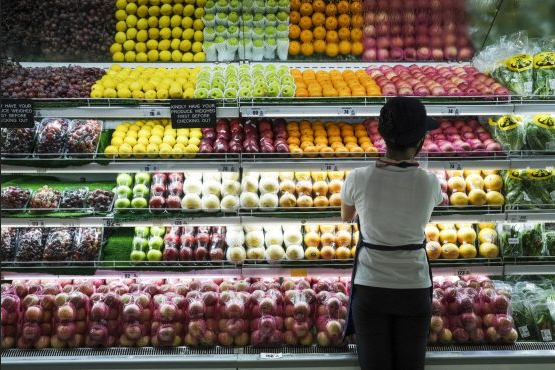CONSUMERS may get some respite from surging food prices in the coming years as demand growth slows and output rises, according to the Organisation for Economic Cooperation and Development and United Nations.
A gauge of global food costs has jumped to a nine-year high on the back of huge Chinese demand and weather concerns, squeezing consumer budgets hurt by the Covid-19 crisis. But in the next couple of years, inflation-adjusted prices may ease before staying largely flat through 2030 as demand growth for grains and fish slows and farming supplies rise, the OECD and UN said in a report.
“The fundamentals don’t say to us that we’re moving to a super-cycle of commodity prices,” Maximo Torero, chief economist of the UN’s Food and Agriculture Organisation, said at a webinar Monday. “Demand growth is going to decrease.”
The year-long rally in food prices has raised the cost of everything from pizza dough to meat and coffee. That could push more people into hunger, while threatening faster inflation that may prompt central banks to tighten stimulus measures for economies still in recovery mode after the pandemic.
In the coming decade, agricultural commodities demand is expected to grow 1.2% a year, compared with 2.2% over the last decade, the OECD and UN said. Output may rise by 1.4%, driven by emerging economies and low-income nations after investments in infrastructure and research, and more efficient allocations of resources. However, output growth in North America, western Europe and Central Asia will slow amid environmental policy constraints.
In the shorter term, more farm workers will return as countries exit lockdowns and ease travel restrictions, alleviating labour shortages and boosting output, the organisations said.
| Other highlights of the report: |
* Global per-capita meat consumption to rise 0.3% a year over the next decade, with demand in high-income nations leveling off as consumers switch to more expensive cuts. * More people will replace red meat with poultry and dairy products due to health and environmental concerns, with poultry expected to account for 41% of meat protein sources by 2030. * Livestock will drive a 4% rise in agricultural greenhouse gas emissions in the next decade, with new policy efforts needed for the farming sector to meet Paris Agreement climate targets. * Vegetable oil consumption growth may slow to a third of the previous 10-year pace due to less demand for biofuels in the US and European Union. |
- Bloomberg



